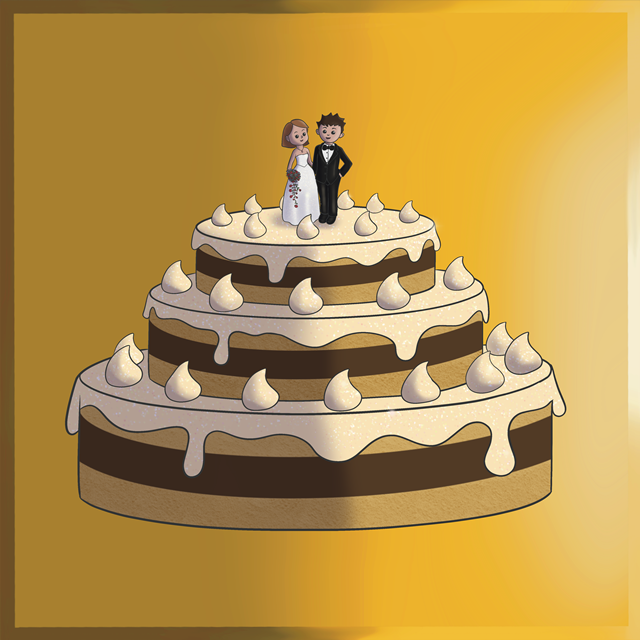Definition:
A “wedding cake” is a special cake served at a wedding reception following the wedding ceremony. It is often multi-tiered, elaborately decorated, and designed to reflect the couple’s tastes and the wedding’s theme.
Etymology:
The term “wedding cake” is derived from the combination of “wedding,” denoting the ceremony where two people are united in marriage, and “cake,” referring to a sweet baked dessert.
Description:
Wedding cakes come in a variety of styles, flavors, and designs, typically including:
- Tiers: Multi-layered cakes are common, with each tier representing a level of the couple’s new life together.
- Decorations: Often adorned with intricate designs such as flowers, ribbons, and edible pearls. Icing types include fondant, buttercream, and royal icing.
- Toppers: The top of the cake is often decorated with figurines of the bride and groom or other symbolic items like hearts or doves.
- Flavors and Fillings: Popular flavors include vanilla, chocolate, lemon, and red velvet, with fillings like fruit preserves, cream, or ganache.
- Cutting Ceremony: The couple cuts the cake together, often feeding the first slice to each other as a gesture of mutual care and affection.
The tradition of wedding cakes dates back to ancient times and has evolved significantly:
- In Ancient Rome, weddings included a ritual where a cake made of barley or wheat was broken over the bride’s head to symbolize fertility and good fortune.
- In Medieval England, guests would bring small cakes, stacking them up; the couple would try to kiss over the stack. This evolved into the tiered wedding cake.
- During the 17th century, the practice of icing cakes began, and cakes became more elaborate, symbolizing the social status of the couple.
- During the 19th century, the advent of refined sugar allowed for white icing, symbolizing purity and the bride’s virginity. Queen Victoria’s wedding cake set the trend for multi-tiered cakes with white icing.
Wedding cake traditions vary across different cultures:
- In the United States and the United Kingdom, wedding cakes typically feature large, multi-tiered cakes. Cutting the cake is a key event during the reception.
- France is known for the “croquembouche,” a tower of cream-filled profiteroles bound with caramel.
- In Italy, they often serve millefoglie, a layered puff pastry filled with cream and fruit.
- In Japan, they sometimes use a “fake” cake for the initial cutting ceremony, with real cake served to guests.
- In Mexico, they traditionally serve tres leches cake, a sponge cake soaked in three types of milk, at weddings.
Symbolism:
The cutting of the wedding cake is a significant ritual in many cultures, symbolizing the first task the married couple performs together. Marriage tend to carry rape symbolism. Cutting the cake, creating a piece of cake, also carries rape symbolism, as a piece of a round cake is an arc.
